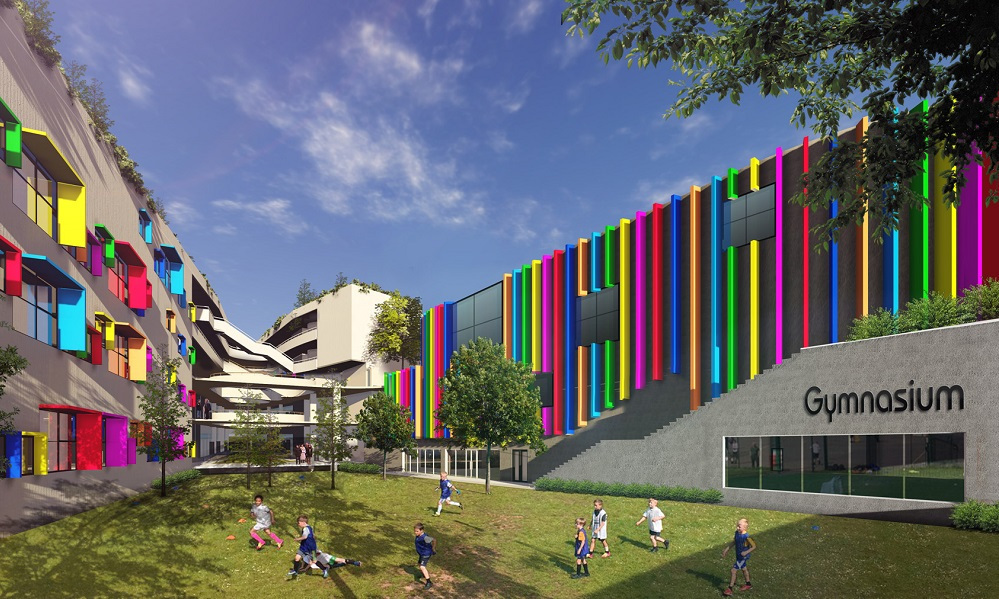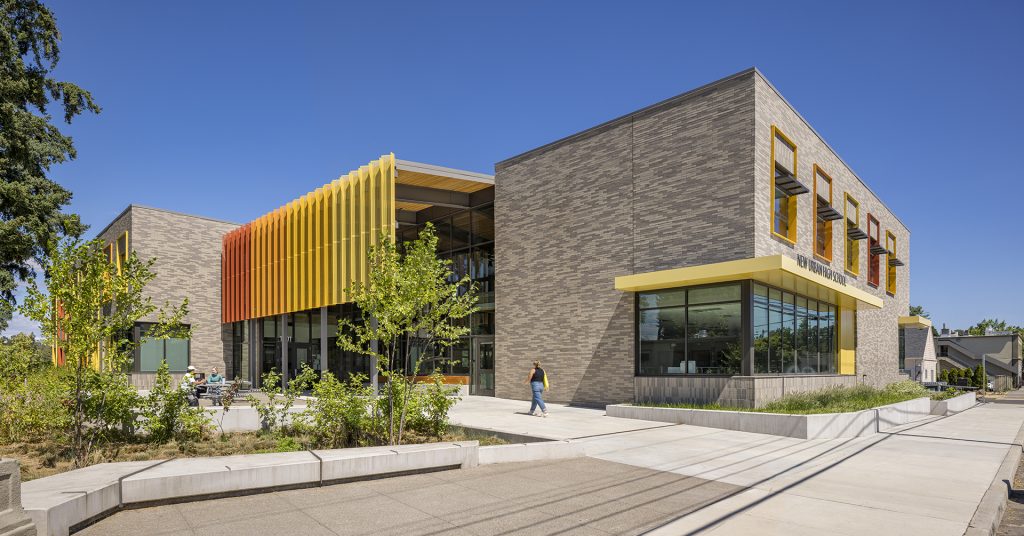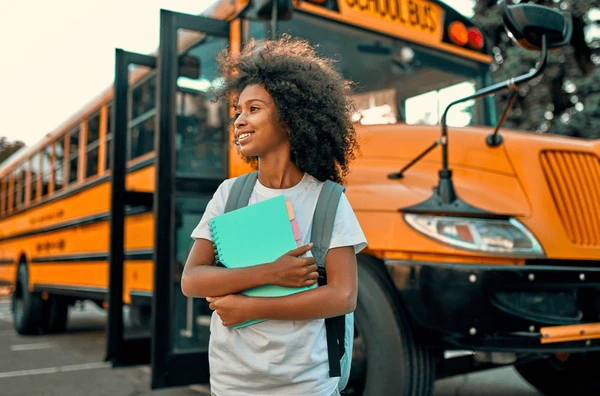In this article, we’ll explore how modern school design is changing the way we think about education, how sustainable building practices contribute to healthier, more efficient schools, and how these transformations can have a profound impact on the learning experience for both students and educators.
The Shift Towards Modern Architecture in Schools

Traditionally, schools were designed with functionality in mind, often sacrificing aesthetic appeal for practicality. However, as the role of the built environment in education has become more widely recognized, school designs have shifted dramatically. Today’s educational spaces are about much more than simply providing shelter—they are about creating dynamic, engaging, and stimulating environments for learning.
1.1. Open, Flexible Spaces
One of the major trends in modern school design is the move away from rigid classroom layouts toward more open and flexible spaces. Traditional classrooms, with rows of desks facing a teacher’s desk, are being replaced by spaces that encourage collaboration, interaction, and active learning. This can include open-plan classrooms, movable partitions, and multi-purpose areas where students can gather for group work or creative projects.
Designs often include breakout areas and flexible workstations that allow students to work in different settings, whether they need quiet time to focus or spaces for team projects and hands-on activities. These spaces encourage student autonomy, promote a sense of ownership over their learning, and cater to a variety of learning styles.
1.2. Connection to Nature
Modern schools increasingly incorporate natural elements into their designs, whether through the use of natural materials like wood and stone, or through green spaces like courtyards and gardens. Many schools are also introducing outdoor classrooms, where students can engage with nature as part of their curriculum.
Research has shown that access to nature improves focus, reduces stress, and boosts overall wellbeing. Schools that integrate natural light, fresh air, and views of greenery create an environment conducive to both academic success and mental health. By designing buildings that blur the lines between the inside and outside, architects can create environments that not only support learning but also promote relaxation and reflection.
Sustainable Building Practices in School Construction
As the demand for eco-friendly and sustainable architecture grows, school inca construction is increasingly focusing on reducing environmental impact while creating energy-efficient and sustainable learning environments. Here’s how schools are embracing green building techniques to create sustainable spaces:
2.1. Energy Efficiency
Modern school buildings are designed to be energy-efficient, with features like solar panels, energy-efficient HVAC systems, and high-performance insulation. These measures help schools reduce their carbon footprint and cut energy costs, all while creating a comfortable environment for students and staff.
Energy-efficient schools not only lower their utility bills but also serve as real-world examples of sustainability for students. They provide hands-on learning opportunities about renewable energy and environmental stewardship.
2.2. Green Roofs and Urban Farming
In cities where space is limited, many schools are turning to green roofs or urban farming to make use of otherwise unused space. These roofs help to reduce the urban heat island effect, improve air quality, and provide students with a unique space to learn about sustainable agriculture and local food systems.
A green roof can be a mini ecosystem, providing an opportunity for students to grow their own vegetables and learn about food production, sustainability, and the importance of local sourcing. This integration of nature and sustainability encourages students to be more conscious of the environment.
2.3. Water Conservation and Reuse
Sustainable school designs also incorporate water conservation features such as rainwater harvesting systems, low-flow faucets, and efficient irrigation systems. These measures help schools reduce their water consumption while promoting sustainable practices among students.
Some schools are also introducing living walls or green infrastructure to manage stormwater runoff naturally. This helps to prevent flooding and supports the broader community’s efforts to deal with the challenges of climate change.
Benefits of Modern School Design for Students and Educators
The benefits of modern school design extend far beyond just the aesthetics of a building. Schools that prioritize sustainability, wellbeing, and flexibility contribute to healthier, more productive students and educators alike.
3.1. Improved Student Wellbeing
Modern schools that incorporate natural light, comfortable learning spaces, and access to greenery are shown to reduce stress and anxiety among students. Environments that emphasize mental health and comfort help students feel safe and motivated to learn.
3.2. Enhanced Academic Performance
Studies have shown that students in schools with improved air quality, natural light, and comfortable temperatures perform better on tests and assignments. Modern design principles that support focus, concentration, and creativity contribute directly to academic success.
3.3. Encouraging Collaborative Learning
The move toward more flexible spaces encourages collaboration, teamwork, and problem-solving. Students are more likely to engage in critical thinking and creative projects when they are provided with the tools and environments that allow for spontaneous collaboration and interaction.
The Future of School Design
As cities continue to grow and education systems evolve, the future of school design will be focused on creating more sustainable, adaptive, and student-centered environments. We can expect to see more schools using biophilic design principles, which prioritize natural connections between the built environment and nature.
In addition, as technology continues to advance, classrooms will become increasingly digitally integrated, with virtual and augmented reality tools that support immersive learning. These technologies will help students engage more deeply with their studies while ensuring that the built environment remains future-proof and adaptable to the needs of the next generation of learners.
Conclusion: The Power of Design in Education
School design has a profound impact on the educational experience. Modern architecture and sustainable building practices are transforming schools into spaces that foster wellbeing, creativity, and academic success. By integrating flexible, collaborative spaces, incorporating nature into the environment, and focusing on energy efficiency, schools are not just preparing students for the future—they are building a better world for them to live in.
As education continues to evolve, school construction must adapt to meet the needs of both students and educators. By embracing innovative design and sustainable practices, we can create learning environments that support the holistic development of future generations.


